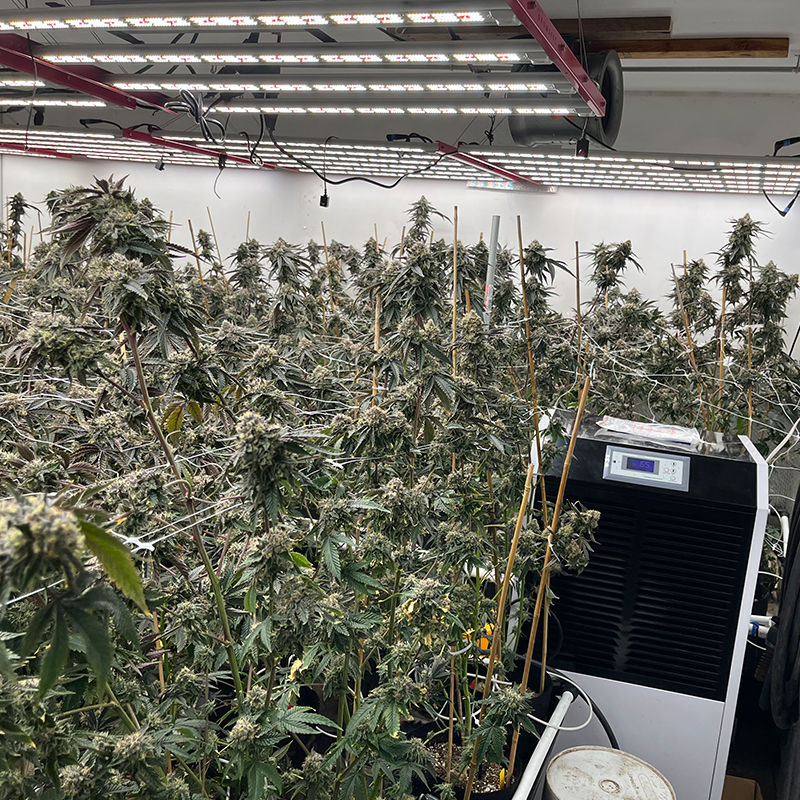While virtually all sealed cultivation environments require some form of dehumidification, not all growers use standalone dehumidifiers.
Some climate systems come with dehumidifying capabilities built-in. And even with built-in dehumidification, supplemental standalone dehumidifiers may still be required. But, there are many factors to consider before deciding which route you should take.

Overall, the major benefits of standalone dehumidifiers vs. integrated systems are:
Lower CapEx
Simple controls
Versatile options
Standalone units offer separate humidity control and operate independently from your cooling system. They are typically mounted from the ceiling, but they can also be mounted to walls or even placed on the ground for portability, depending on the unit. They range dramatically in size, with commercial dehumidifiers ranging from less than 100 PPD (pints per day) to over 700 PPD. They also vary in energy consumption and quality. Because these systems use separate units to achieve cooling and dehumidification, each with their own compressors and cooling coils that require electricity to function, standalone systems tend to require more electrical infrastructure than an integrated system. In fact, dehumidifiers can actually contribute small amounts of heat back into the grow space as a byproduct of operation, adding to the AC load. However, standalone systems may be less expensive up-front than integrated systems. This is because integrating cooling and dehumidification requires a more complex machine. HVACD technology approaches that generally rely on standalone dehumidification include:
DX air conditioning units
2-pipe chilled water systems
INTEGRATED DEHUMIDIFICATION
Overall, the major benefits of integrated dehumidification are:
Lower Electrical Infrastructure
Sophisticated control
Precise parameters
Integrated dehumidification refers to systems in which the central HVACD unit combines the ability to cool and dehumidify the cultivation space. Modulating fans and cooling media allow the unit to respond to varying loads as needed as opposed to an on/off switch. These systems minimize heat waste and limit the number of compressors and cooling coils being used. This may reduce operating and maintenance costs and improve precision, although they can be more expensive to purchase due to their complexity. If your integrated mechanical system is properly designed, you will be able to significantly reduce or entirely eliminate standalone units. However, depending on the design approach, you may still purchase supplemental dehumidifiers to keep your humidity in check. You may also end up buying dehumidifiers later on if you make changes that were not originally taken into consideration during your initial design like changing watering rates, deviating from the temperature and humidity setpoints the system was designed for, or increasing the number of plants per room. Your engineer may also incorporate supplemental units in your dry rooms. Because proper control over humidity is an integral part of the drying process, you may need extra help in drying out your flower. HVACD technology approaches that integrate cooling and dehumidification include:
Hot gas reheat units
4-pipe chilled water systems
Comments